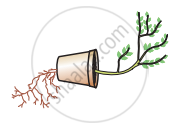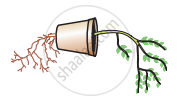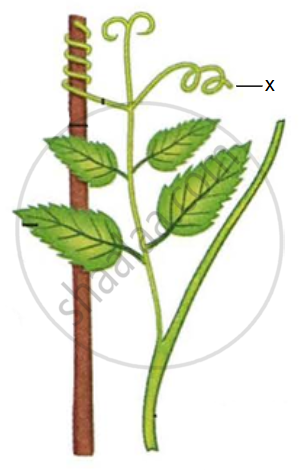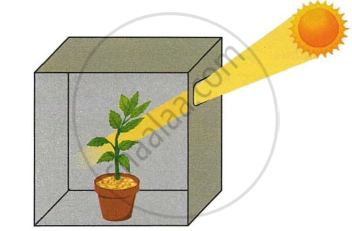Advertisements
Advertisements
Question
One of the following is not caused by the growth related movement of the concerned plant part. This is:
Options
phototropism
photonasty
thigmonasty
thigmotropism
Solution
thigmonasty
Explanation:
The rolling up of plant leaves on touching is a thigmonastic movement and it is not related to growth.
APPEARS IN
RELATED QUESTIONS
What is the difference between photonasty and thigmonasty?
To which directional stimuli do roots respond?
What is the difference between thigmotropism and thigmonasty? Name one plant which exhibits thigmotropism and one plant which exhibits thigmonasty. What behaviour (or responses) of these plants make you think that they exhibit thigmotropism and thigmonasty respectively?
The growth of a pollen tube towards the ovule caused by a sugary substance as stimulus is an example of :
(a) phototropism
(b) chlorotropism
(c) gravitropism
(d) chemotropism
The top part A of the flask-shaped reproductive organ X in the flower of a plant secrets a surgery substance into its lower part B which goes towards the bottom part C of the flask-shaped organ. When a tiny grain D coming from the top part E of another reproductive organ Y i the flower falls on part A, it grows a long tube F through the organ X i response to the sugary substance and reaches the bottom part C of flask-shaped organ to carry out fertilisation.
(a) Name parts (i) organ X, and (ii) organ Y, inside the flower?
(b) Name parts (i) A (ii) B, and (iii) C, of flask-shaped organ.
(c) Name (i) grain D, and (ii) part E of organ Y.
(d) Name the tube F.
(e) What is the phenomenon of growing a long tube in response to sugary substance in the process of fertilisation in a flower known as?
In the given figure (a), (b) and (c), which appears more accurate and why?
 |
 |
 |
| (a) | (b) | (c) |
Give an example of negative hydrotropism.
Ali has some pea plants in his garden which need a support to grow as seen in the picture given below:

- Name the phenomenon depicted by the shoot in the given figure.
- Define the above phenomenon.
- Write the name of the part marked X.
Differentiate between:
Positive and negative tropism
The figure given below depicts a kind of tropic movement in plants. Study the same and answer the following questions:

- What kind of a movement is shown in the figure? Define it.
- How does this movement differ from geotropism?
- Name the stimulus responsible for thigmotropism. Give one example of a plant showing thigmotropism.
- Name one stimulus which gives a positive response for the roots but a negative response for the shoot.
- Draw a neat and labelled diagram of the part of a plant showing leaf tendril. Name the plant.
